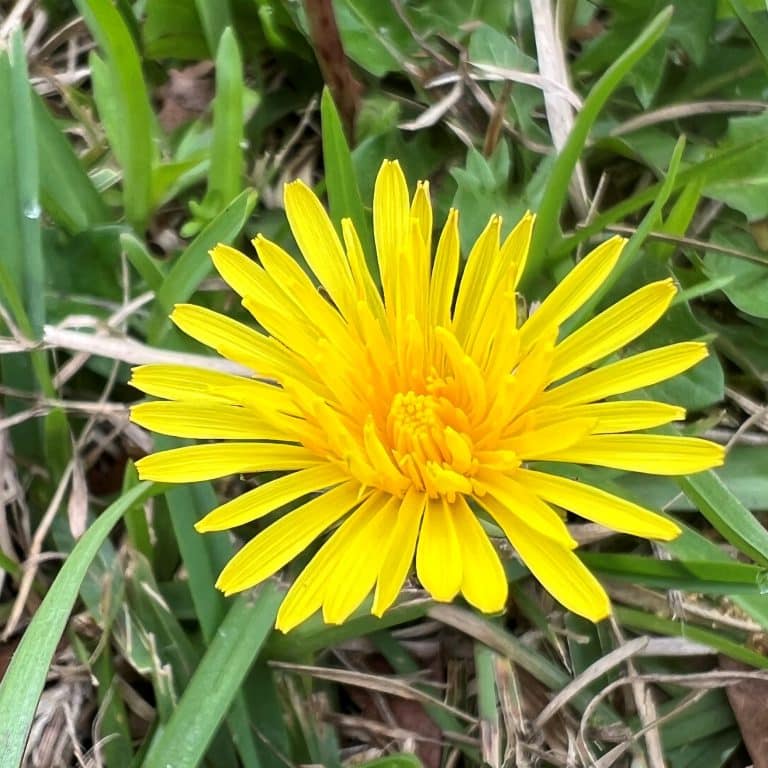It is impossible to pass up a dandelion seed ball and not blow out all the seeds. I have no recollection of who showed me that it was a rule, but I did disperse quite a few seeds in my youth. First you closed your eyes, made a wish, and then blew as hard as you could with the goal of leaving only the stem behind. Oh, and dandelions have pretty yellow flowers!

Like many of its sunflower relatives, the small seeds of Common Dandelion, Taraxacum officinale, hang below a parachute of silky pappi – tuffs of hairs that help lift seeds into the air and off to new places to grow. And grow they do, dandelions being one of the most common “weeds” in lawns, roadsides and open fields across North America and Europe. Originating in the Eurasian continent, this plant was imported to the Americas as a source of food.
Every part of this plant is edible. Leaves can be eaten raw or cooked. Roots can be baked and ground and used as a coffee substitute. The taste is apparently similar to coffee, but the roots are caffeine free. Well, I anticipate an experiment in my future. The flowers of dandelions make a fine wine and in some cultures a syrup or jam. The plant also has a long history of herbal uses. The species name “officinale” means pharmacy.
Apart from finding the slender flower stems and “clocks” (seed balls), Common Dandelion plants blend into the landscape, with a basal rosette of leaves that lay close to the ground. Many of its close relatives have a similar habit but there are many species of dandelions and other close relatives that resemble them. Prickly Sowthistle (Sonchus asper), for example, is taller, with spiny leaves, and multiple flowers and clocks. I have tried to blow those clocks, but the joy is not quite the same.
Like many of the common plants in our world, Common Dandelion is one of those plants that evoke memories of our youth. They were in the outdoor places where we spent much of our time and were often as entertaining as any toy. And yet, we lived in ignorance of their origins or use beyond that. When I point out that a common plant like this one is non-native or even invasive, I often get a surprised reaction. The fact is that many of these have been here so long that they predate our generational memory.
In any case, plants like Common Dandelion are here to stay and do have value as parts of our memories. They are also a great means of connecting our children and grandchildren to the outdoor world that we enjoyed. This effort should perhaps be a goal for all of us, to ensure that real connections to the earth remain strong – like the act of blowing away seeds of a dandelion clock and watching them fly away.
Hope to see you in our great outdoors!